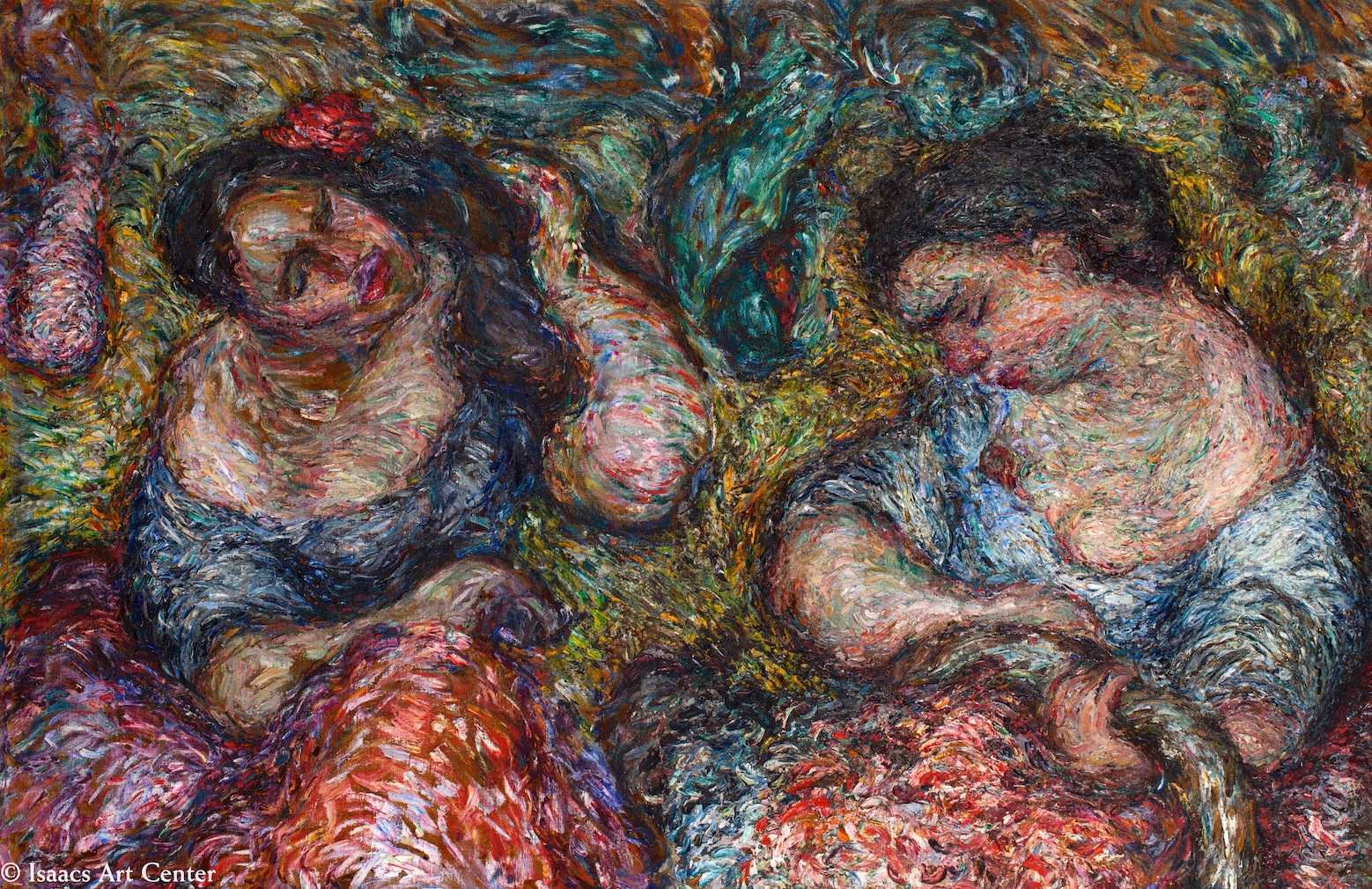Madge Tennent’s subjects were often anonymous and archetypal: brides festooned with flowers, musicians strumming their ukulele, or chic ladies strolling along sun-drenched streets. Yet in devising her distinct vision of the Hawaiian figure, she drew inspiration not only from the real-life people she observed in Honolulu, but also from images of the historical chiefesses and queens of Hawaii who propelled the islands from devolved chiefdoms into a unified, internationally-recognized kingdom.
In this subdued oil on canvas, Tennent depicts a pair of lei sellers weaving vibrant tropical blossoms into the beautiful, fragrant necklaces that herald the islands to this day. They seem suspended in an otherworldly realm, encircled by color and line, intent upon their time-honored craft and indifferent to the sociopolitical changes engulfing Hawaii. Writing for the New York Times in 1996, art critic Susan F. Yim praised the painting, noting that its subjects — typical of Tennent’s iconic wahine — possess “heavy-lidded eyes, thick lips, and large yet delicate fingers [that] are far from the pretty, slender 'ideal' of the Polynesian maiden.” Unlike the cloying, fanciful hula girls peddled in tourist brochures, these two lei-makers strike a balance between animated physicality and spiritual tranquility. The Hawaiian woman emerges as quietly strong, eminently graceful, and steeped in tradition—just as Madge Tennent perceived her.
Two Lei Sellers was among several large-scale paintings featured in Tennent’s 1937 exhibition tour of Europe and the United States mainland, where she had become a regular presence. The shows were universally acclaimed, forecasting Madge Tennent’s legacy as the greatest individual contributor to Hawaiian art in the 20th century.
We present today's masterpiece thanks to the Isaacs Art Center.
P.S. This painting makes me think about travelling to tropical islands. Here you can get to know about artists’ beloved travel destinations as seen through their art. <3


 Madge Tennent
Madge Tennent